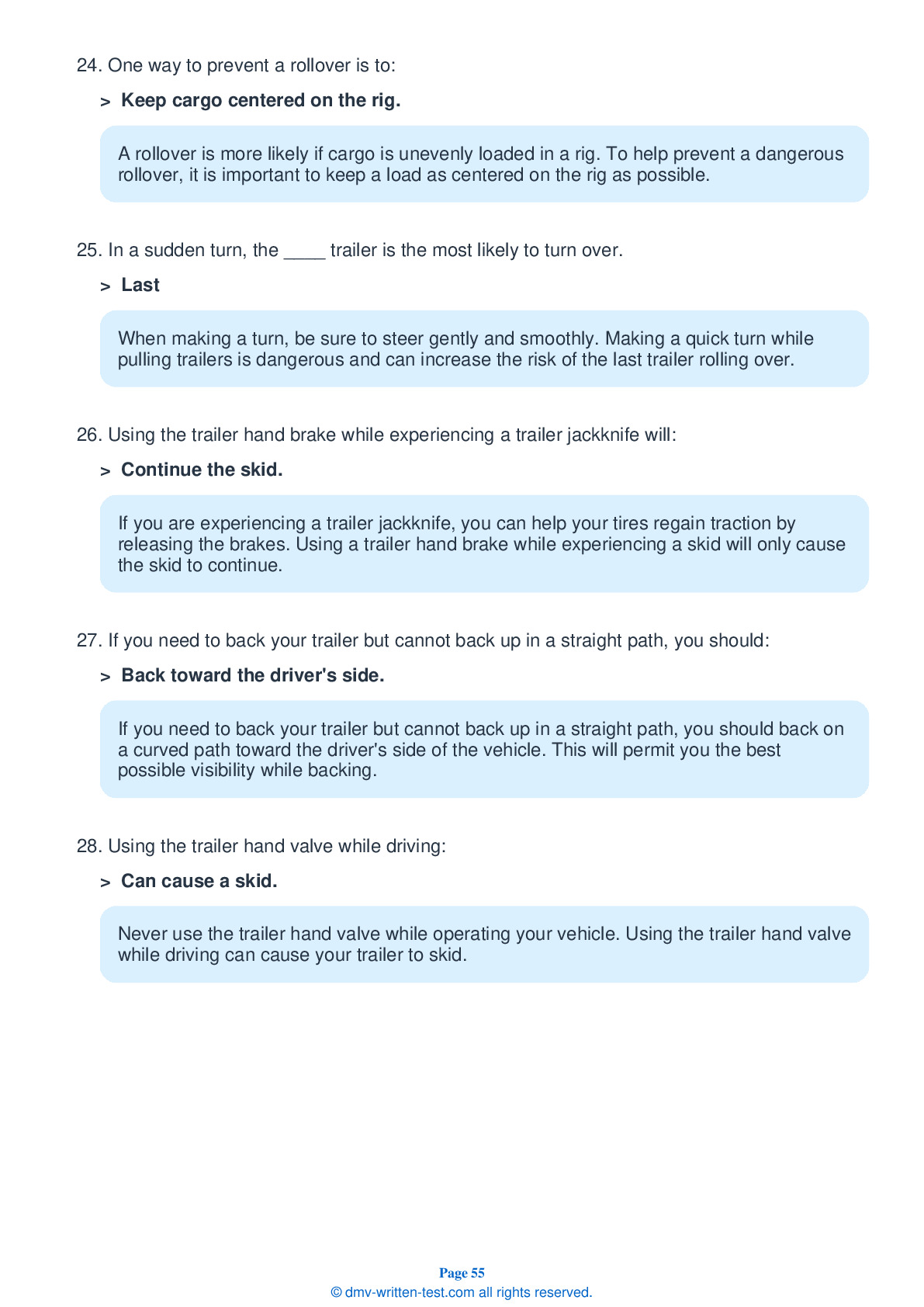Combination
All applicants who are applying for a Class A CDL should be prepared to take the Combination test. This test covers information found in Section 6 of the New York State Commercial Driver's Manual. Section 6 provides the information needed to safely operate tractor-trailers, doubles, triples, and straight trucks with trailers. The test is made up of 20 multiple-choice questions, and applicants will need to correctly answer a minimum of 16 questions to pass. The Combination test is not a replacement for the Double/Triple endorsement test.
Number of Question
Passing Score
8. During a trip, which shut-off valves should be open?
Explanation
When starting a trip, be sure that all shut-off valves are in the open position, except for the last valves on the rear trailer. It is important that air reaches the brakes on all trailers and that the air is not able to escape from the back of the vehicle.
9. A trailer will be most likely to swing around when:
Explanation
An empty trailer will require a longer stopping distance than a loaded trailer. Additionally, a trailer is most likely to swing out and strike other vehicles when it is lightly loaded or empty.
10. When driving a bobtail tractor, you should be aware that:
Explanation
Bobtail tractors are tractors that are not attached to any semitrailers. When operating a bobtail, you should be aware that stopping can be difficult and that it will take a longer distance to bring the bobtail to a complete stop than it would a tractor attached to a loaded semitrailer.
11. What is a tractor protection valve?
Explanation
In a combination vehicle with air brakes, the tractor protection valve keeps air in the tractor or truck brake system in the event of the trailer breaking away or developing a leak.
12. If you need to back your trailer but cannot back up in a straight path, you should:
Explanation
If you need to back your trailer but cannot back up in a straight path, you should back on a curved path toward the driver's side of the vehicle. This will permit you the best possible visibility while backing.
13. Using the trailer hand brake while experiencing a trailer jackknife will:
Explanation
If you are experiencing a trailer jackknife, you can help your tires regain traction by releasing the brakes. Using a trailer hand brake while experiencing a skid will only cause the skid to continue.
14. Fully-loaded rigs:
Explanation




